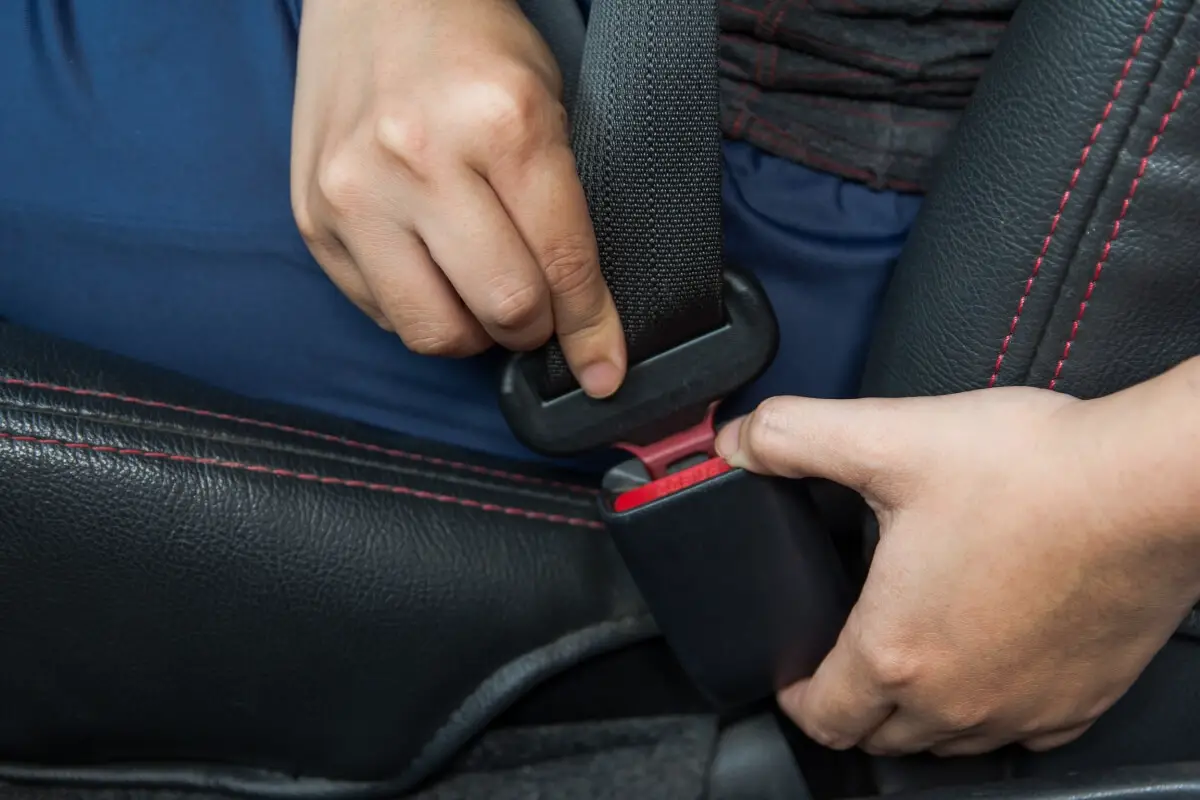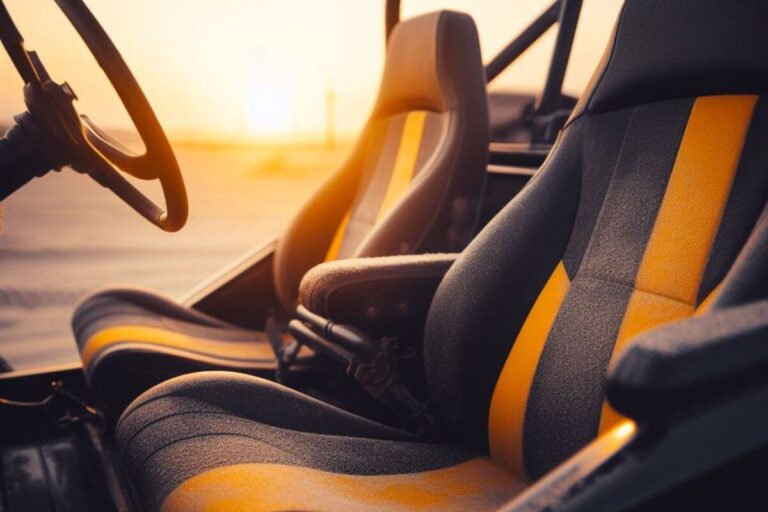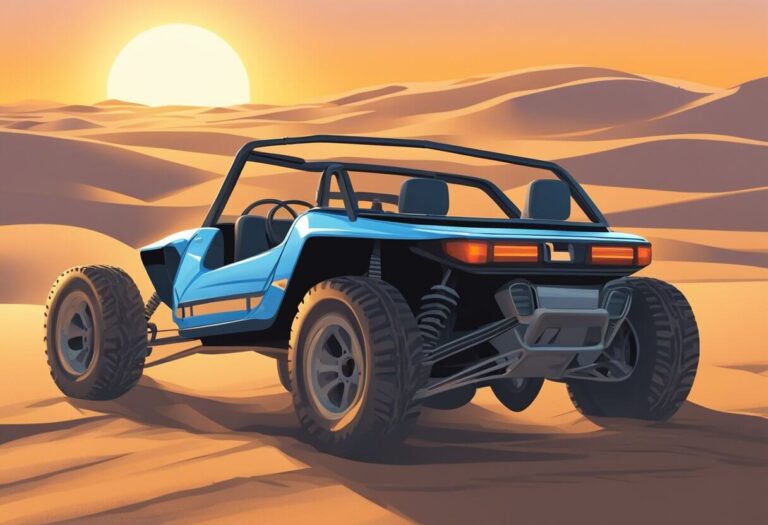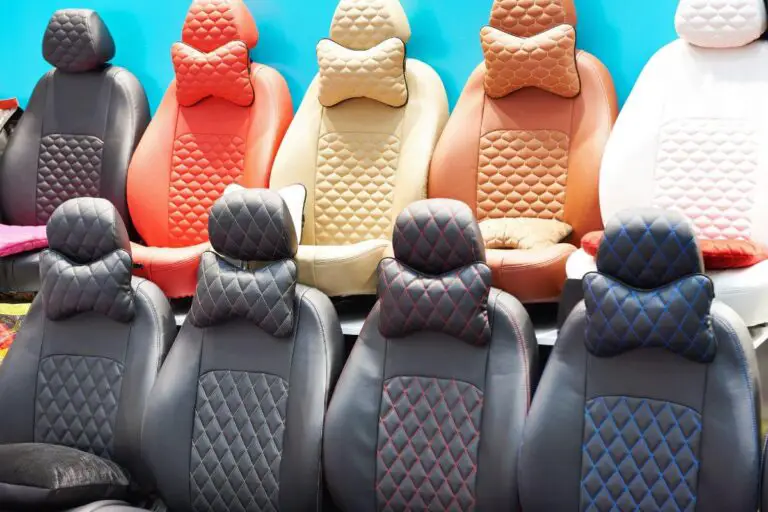Dune Buggy Seat Belts: Importance and Installation Guide

Dune buggies are a popular off-road vehicle option and can be a thrilling way to explore the outdoors. However, safety should always be a top priority when driving a dune buggy. One important safety feature that should not be overlooked is a properly installed and maintained seat belt.
Dune buggy seat belts come in a variety of types and styles, each with their own unique features and benefits. Some common types include lap belts, harness belts, and retractable seat belts. It is important to understand the differences between these types and choose the one that best fits your needs and preferences.
When it comes to dune buggy seat belts, safety standards are in place to ensure they meet certain requirements. These standards vary depending on the type of seat belt and the intended use. It is important to research and understand these safety standards to ensure you choose a seat belt that will provide the necessary protection in case of an accident.
Key Takeaways
- Dune buggy seat belts are an important safety feature that should not be overlooked.
- There are various types of dune buggy seat belts, and it is important to choose the one that best fits your needs and preferences.
- Safety standards are in place for dune buggy seat belts, and it is important to research and understand them to ensure you choose a seat belt that provides the necessary protection.
Understanding Dune Buggy Seat Belts
Dune buggies are open-air vehicles that are designed to be driven off-road. They are often used for recreational purposes, including sand dune racing and beach cruising. While these vehicles can be a lot of fun to drive, they can also be dangerous if proper safety precautions are not taken. One of the most important safety features on a dune buggy is the seat belt.
Types of Seat Belts
There are several types of seat belts that can be used in a dune buggy. Some of the most common types include:
- Lap Belts: These are the most basic type of seat belt and are designed to keep the occupant in the seat in the event of an accident. They are typically anchored to the frame of the vehicle and wrap around the occupant’s waist.
- Shoulder Belts: These seat belts are designed to provide additional upper body protection in the event of an accident. They are typically anchored to the frame of the vehicle and wrap around the occupant’s shoulder.
- Harness Belts: These seat belts are designed to provide maximum protection in the event of an accident. They typically include a lap belt, shoulder belt, and sometimes a crotch strap. They are anchored to the frame of the vehicle and wrap around the occupant’s waist, shoulder, and between the legs.
Safety Considerations
When choosing a seat belt for a dune buggy, there are several safety considerations to keep in mind. These include:
- Proper Fit: The seat belt should fit snugly around the occupant’s waist and shoulder. It should not be too loose or too tight.
- Anchorage Points: The seat belt should be anchored to the frame of the vehicle using appropriate hardware. The anchorage points should be strong enough to withstand the forces of an accident.
- Antisubmarine Belt: A crotch strap or antisubmarine belt should be used with a harness belt to prevent the occupant from sliding under the lap belt in the event of an accident.
By taking these safety considerations into account and choosing the appropriate seat belt for a dune buggy, drivers can help ensure a safe and enjoyable off-road experience.
Types of Dune Buggy Seat Belts
When it comes to dune buggy safety, seat belts are a crucial component. There are several types of seat belts that can be used in a dune buggy, each with its own advantages and disadvantages. In this section, we will discuss the three main types of dune buggy seat belts: Lap Belts, Harness Belts, and Retractable Belts.
Lap Belts
Lap belts are the simplest type of seat belt and are often the most affordable. They consist of a single strap that goes across the lap and clips into place. These belts are easy to install and use, making them a popular choice for many dune buggy owners.
However, lap belts only provide minimal protection in the event of a crash. They do not prevent the upper body from moving forward, which can result in serious injuries. For this reason, lap belts should only be used as a secondary restraint system in combination with other types of seat belts.
Harness Belts
Harness belts are a more advanced type of seat belt that provide better protection than lap belts. They consist of multiple straps that go over the shoulders, chest, and hips, and clip into place. Harness belts are designed to keep the body in place during a crash, reducing the risk of injury.
There are different types of harness belts available, including 4-point, 5-point, and 6-point harnesses. The number of points refers to the number of straps that secure the body in place. The more points, the better the protection.
Retractable Belts
Retractable belts are a popular choice for dune buggy owners who want the convenience of a seat belt that is easy to use and store. These belts retract into a housing when not in use, making them less obtrusive than other types of seat belts.
Retractable belts can be either lap belts or harness belts, providing the same level of protection as their non-retractable counterparts. However, they can be more expensive and may require professional installation to ensure proper operation.
Choosing the right seat belt type for your dune buggy depends on needs and budget. Lap belts are affordable with minimal protection. Harness belts offer better protection but cost more. Retractable belts are convenient but may require professional installation. Choose a seat belt meeting safety needs and ensure correct installation for maximum protection.
Safety Standards for Seat Belts
When it comes to dune buggy seat belts, safety is a top priority. There are several different safety standards that seat belts must meet in order to ensure that they are effective in preventing injury in the event of an accident.
Federal Motor Vehicle Safety Standards
The Federal Motor Vehicle Safety Standards (FMVSS) are a set of regulations that all vehicles sold in the United States must meet. These standards include specific requirements for seat belts, such as the number of attachment points, the strength of the belt material, and the type of buckle used.
For dune buggies, the FMVSS requirements for seat belts are the same as for passenger cars. This means that dune buggy seat belts must have at least three attachment points, be made from strong and durable materials, and have a buckle that can be easily released in an emergency.
Racing Association Requirements
In addition to the FMVSS, there are also safety requirements set by racing associations for dune buggy seat belts. These requirements are designed to ensure that seat belts are effective in high-speed racing situations.
For example, the National Hot Rod Association (NHRA) requires that all racing seat belts meet their safety standards, which include specific requirements for the strength of the belt material, the number of attachment points, and the type of buckle used. Other racing associations may have different requirements, so it is important to check with the specific association before purchasing seat belts for racing purposes.
Choose seat belts meeting FMVSS and racing association safety requirements. Dune buggy drivers can ensure using safest, most effective seat belts possible.
Installation of Dune Buggy Seat Belts
When it comes to installing seat belts in a dune buggy, safety should always be the top priority. In this section, we will cover the key aspects of installing seat belts in a dune buggy, including mounting points, belt anchorage, and buckle placement.
Mounting Points
The first step in installing seat belts in a dune buggy is to identify the mounting points. A dune buggy typically has four mounting points for seat belts, two in the front and two in the back. These mounting points should be strong enough to withstand the force of a collision.
Belt Anchorage
The next step is to anchor the seat belt to the dune buggy. The seat belt should be anchored to a strong point on the frame of the dune buggy. This can be achieved by welding a bracket to the frame or by using a pre-existing bolt or other mounting point.
Buckle Placement
The final step is to position the seat belt buckle correctly. The buckle should be positioned so that it is easy to reach and use, but not so low that it interferes with the driver’s legs. It is also important to ensure that the buckle is securely fastened to the anchorage point.
Maintenance and Inspection
Regular Checks
Regular checks are important to ensure that the seat belts in your dune buggy are functioning properly. The seat belts should be checked before each ride to ensure that they are properly adjusted and secured. The seat belts should also be checked for any damage or wear and tear.
Wear and Tear
Over time, seat belts can become damaged or worn out. This can happen due to exposure to the elements, regular use, or improper use. It is important to inspect the seat belts for any signs of wear and tear, such as fraying or tears in the material. If any damage is found, the seat belts should be replaced immediately.
Replacement Guidelines
Seat belts should be replaced if they are damaged or worn out. Additionally, seat belts should be replaced every 10 years, even if they appear to be in good condition. This is because the materials used in seat belts can degrade over time, even if they are not visibly damaged.
When replacing seat belts, it is important to use high-quality replacement parts that are designed specifically for your dune buggy. It is also important to follow the manufacturer’s instructions for installation to ensure that the seat belts are installed properly and will function correctly in the event of an accident.
Regular maintenance and inspection of your dune buggy’s seat belts can help ensure your safety while riding. By following the guidelines for regular checks, wear and tear, and replacement, you can help ensure that your seat belts are functioning properly and will provide the protection you need in the event of an accident.
Customization Options
When it comes to dune buggy seat belts, there are a variety of customization options available to suit the individual’s needs and preferences. Some of the most popular customization options are color variations, material choices, and personalization.
Color Variations
Dune buggy seat belts are available in a wide range of colors to match the interior of the vehicle or to add a pop of color. Some of the most popular colors include black, gray, red, blue, and yellow. It is important to note that some colors may be more prone to fading or discoloration over time, so it is important to choose a high-quality product with colorfast properties.
Material Choices
Dune buggy seat belts can be made from a variety of materials, including nylon, polyester, and leather. Nylon is a popular choice due to its durability, affordability, and resistance to water and mildew. Polyester is another durable option that offers a higher level of UV resistance. Leather seat belts are less common but offer a luxurious and stylish look.
Personalization
For those who want to add a personal touch to their dune buggy seat belts, there are many customization options available. Some companies offer embroidered or printed designs, allowing the individual to add their name or a graphic to the seat belt. Others offer custom stitching or hardware options, allowing the individual to create a unique look that reflects their personal style.
Purchasing Tips
Quality Assessment
When purchasing dune buggy seat belts, it is important to assess the quality of the product. Look for seat belts that meet the safety standards set by the National Highway Traffic Safety Administration (NHTSA). The NHTSA sets the minimum safety standards for seat belts in the United States. Additionally, consider the materials used in the construction of the seat belts. High-quality materials such as nylon and polyester are durable and can withstand the harsh conditions of off-road driving.
Compatibility with Dune Buggy
Before purchasing seat belts for your dune buggy, ensure that they are compatible with your vehicle. Check the manufacturer’s specifications to ensure that the seat belts are designed to fit your dune buggy. It is also important to consider the type of seat belts that are suitable for your dune buggy. Some dune buggies require lap belts, while others require shoulder belts or a combination of both.
Warranty and Return Policies
When purchasing dune buggy seat belts, it is important to consider the warranty and return policies. Look for seat belts that come with a warranty to protect against any defects or damages. Additionally, ensure that the return policy is clear and concise in case you need to return the product for any reason. It is also important to check the warranty and return policies of the manufacturer or seller to ensure that they are reliable and trustworthy.
Legal Considerations
When it comes to dune buggy seat belts, there are several legal considerations that must be taken into account. This section will provide an overview of the state regulations, off-road use, and on-road use.
State Regulations
Each state has its own set of regulations regarding dune buggy seat belts. It is important to check with the local Department of Motor Vehicles (DMV) to ensure that the seat belts meet state requirements. In general, seat belts must be installed correctly and meet certain safety standards.
Off-Road Use
Dune buggies are typically used for off-road purposes, such as on sand dunes or in the desert. While seat belts may not be required for off-road use, they are highly recommended for safety reasons. In the event of an accident, seat belts can help prevent serious injuries or even death.
On-Road Use
In some states, dune buggies are allowed to be used on public roads. When driving on public roads, seat belts are required by law. It is important to ensure that the seat belts meet state requirements and are installed correctly.
Prioritize safety for dune buggy seat belts. Following state regulations and using seat belts correctly helps prevent serious injuries or accidents.




